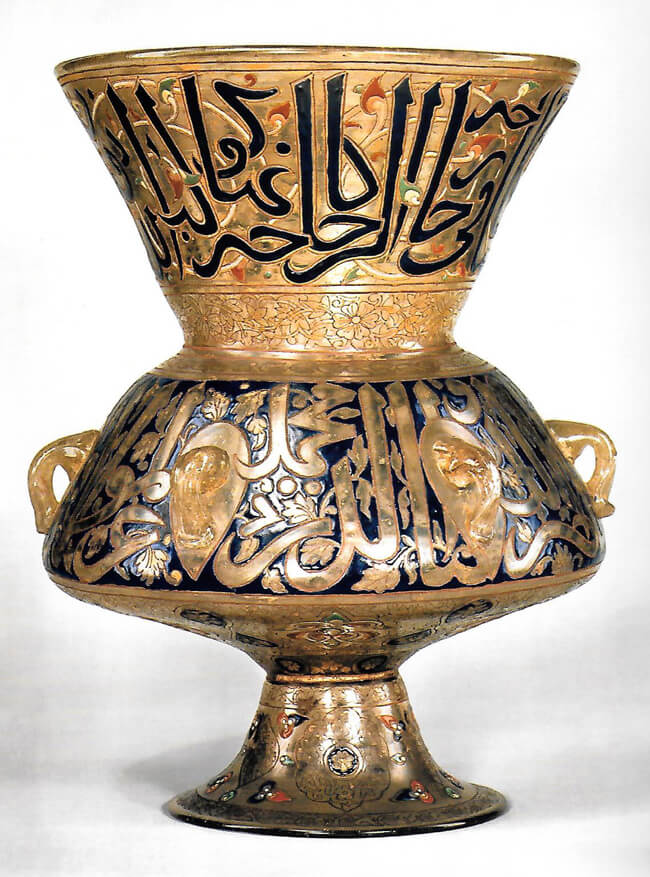-

 Know, the true nature of your Beloved.
Know, the true nature of your Beloved.
In His loving eyes, your every thought,
Word and movement is always –
Always Beautiful.
~ Hafiz
Islamic Arts

Glass and Rock Crystal
Following a history of glassmaking in the Middle East, new forms and techniques were developed by Islamic glassmakers, who attained new levels of refinement. Mould blown vessels are some of the most common glass objects that have survived from the early Islamic period. Hinged and cylindrical moulds were used, which usually left a pattern on the glass, which was blown into the mould.
By the 10th and 11th centuries, cut glass objects in Egypt and Iran had reached outstanding levels of refinement. One method, relief cutting, a technically difficult process, allowed the decoration of highly stylized animals on the walls of very thin (i.e. 1mm thick) glassware, producing some spectacular pieces. Some famous pieces are held in museums around the world.
Mosque lamps, beakers, bottles and pilgrim flasks exhibited the next level of evolution of superb Islamic glassware. These gilded and enamelled objects, developed in Syria and Egypt, were the result of clear glass that was first gilded and decorated with coloured paste and then heated, causing the enamels to fuse to the surface, leaving the decoration to stand out in relief. This technique required great skill, as the gilding and the various enamels fuse to the glass vessels at different temperatures.
Glassmaking continued in the Ottoman Empire and Mughal India.
Early rock crystal objects were produced in Sassanian Iran and later some superb examples were produced in Iraq, Egypt and Iran. Cut from flawless blocks of quartz, lamps, seals and even chess pieces were decorated with acanthus leaves, other plants, flowers, birds and animals.
Source:- “The Timeline History of Islamic Art and Architecture” by Nasser D. Khalili.
Photo above:- Mosque lamp. Cairo, Egypt, c.1300 CE. Source:- Museum for Islamische Kunst, Berlin.
